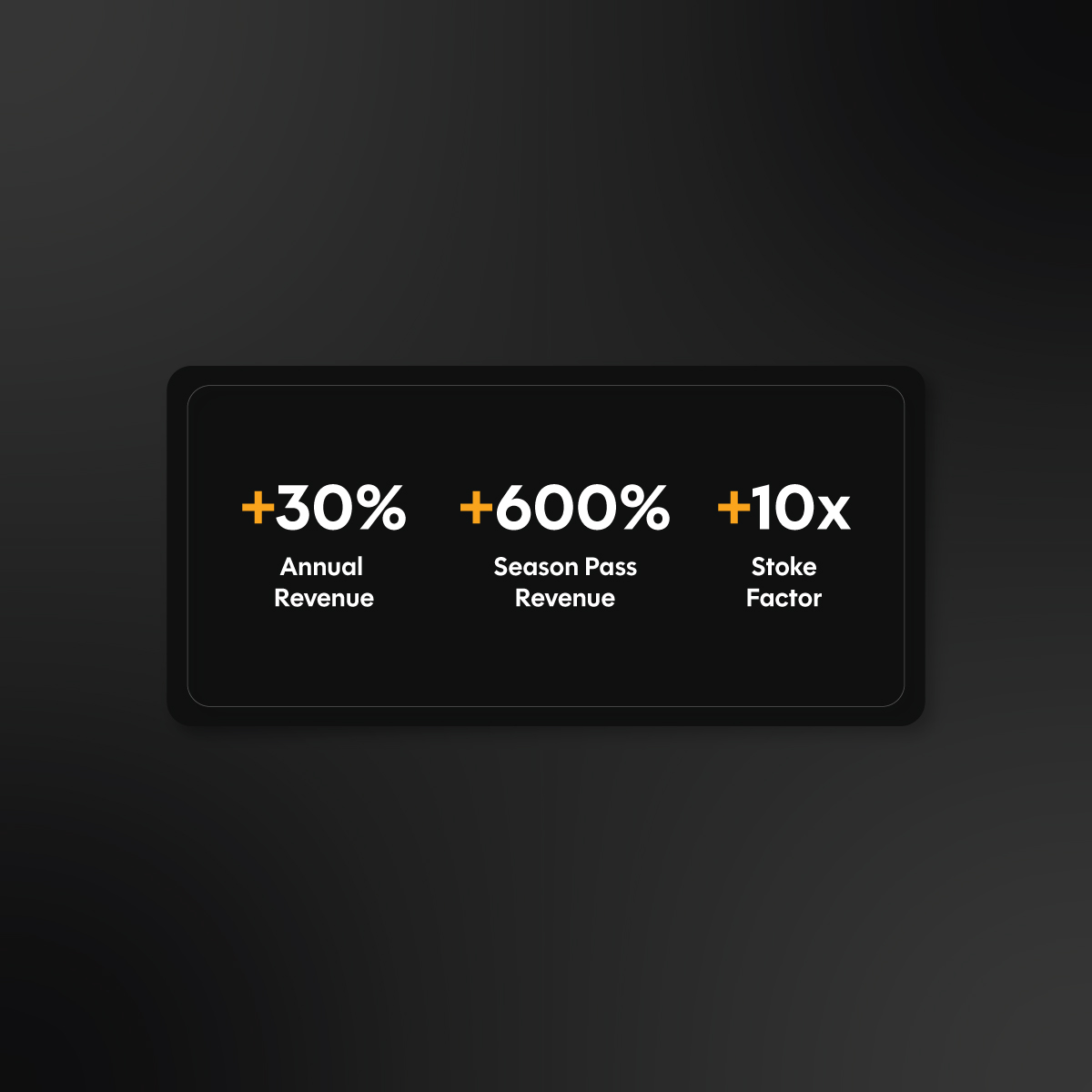Most restaurant owners think they need to hire an expensive social media manager when their front desk staff could become their secret weapon for growth.
You’re juggling orders, managing staff, and keeping customers happy—the last thing you need is another overwhelming task on your plate. But what if we told you that your hostess, server, or admin assistant (or any stand out employee really) could become your social media rockstar? In just 15 minutes a day, they can build a system that fills tables and creates raving fans.
Who This Guide Is For
This step-by-step system is designed for:
- Restaurant owners feeling overwhelmed by social media demands
- Front desk staff or team members who could handle social media with proper guidance
- Restaurants struggling to see ROI from their current social media efforts
- Busy restaurant managers who need a simple, repeatable workflow
The 6 Restaurant Social Media Mistakes That Kill Your Online Presence
Mistake #1: Posting Only Food Photos Without Context
The Problem: Beautiful food shots with no story, emotion, or personality behind them.
Your customers don’t just want to see another perfectly plated dish—they want to feel connected to the experience. When you post a gorgeous photo of your signature pasta without any context, you’re missing the opportunity to create an emotional connection.
The Fix: Show the story behind the dish, the chef’s passion, or customer reactions.
Instead of just posting a photo of your lasagna, share the story: “This family recipe has been passed down for three generations. Our head chef Maria learned it from her nonna in Sicily, and every layer is made with the same love and attention her family put into Sunday dinners.”
Mistake #2: Ignoring Customer Comments and Reviews
The Problem: Treating social media as a broadcast channel instead of a conversation.
When customers take time to comment on your content or leave reviews, they’re giving you free engagement that boosts your visibility and ultimately puts your content in front of more people.
Ignoring them sends the message that you don’t value their input and you lose out on the algorithm boost.
The Fix: Respond to every comment within 4 hours.
A simple “Thank you so much! We can’t wait to see you again soon!” can turn a casual follower into a loyal customer who brings friends.
Mistake #3: No Clear Brand Voice Across Platforms
The Problem: Your Instagram sounds corporate while your Facebook feels too casual.
Customers get confused when your brand personality changes from platform to platform. This inconsistency weakens your brand recognition and makes you seem unprofessional.
The Fix: Define your restaurant’s personality once and apply it everywhere.
Are you the cozy family spot that treats everyone like relatives? The trendy bistro with a playful attitude? The upscale establishment that values sophistication?
Choose your voice and stick to it across all platforms.
Mistake #4: Forgetting to Showcase Your Team and Culture
The Problem: Focusing only on food instead of the human experience.
People connect with people, not just plates.
Your team members are your biggest differentiator—their personalities, stories, and passion for hospitality set you apart from every other restaurant in town.
The Fix: Make your staff the stars.
Feature your servers’ favorite menu items, show your prep cooks in action, or highlight your manager’s anniversary with the restaurant. These posts consistently get higher engagement than food photos alone.
Mistake #5: Not Leveraging User-Generated Content
The Problem: Missing free marketing gold from customer posts and reviews.
Your customers are already creating content about your restaurant—photos of their meals, stories about special occasions, check-ins at your location. When you don’t reshare this content, you’re leaving money on the table.
The Fix: Create hashtags, encourage sharing, and repost customer content.
Develop a branded hashtag like #PizzaAtPaulos or #NightOutAtNicos, and encourage customers to use it. Then feature the best customer posts in your stories and feed, always giving credit to the original poster.
Mistake #6: Posting Without Strategic Intent
The Problem: Random content doesn’t drive business goals.
Every post should have a purpose beyond just “staying active” on social media. Without strategic intent, you’re just creating digital noise instead of building a community that converts to customers.
The Fix: Every post should serve a purpose: build authority, drive traffic, or increase orders.
Before you post anything, ask yourself: “What is this post supposed to accomplish?” Whether it’s showcasing your expertise, encouraging reservations, or building brand loyalty, clarity of purpose leads to better results.
The 5 Content Pillars Every Restaurant Needs to Master
Content pillars are the broad categories that any post can fit within. Using these helps you plan out your social calendar while ensuring your content isn’t repetitive.
Authority Content (Lightbulb Moments)
What it is: Position your restaurant as the food expert.
This content establishes your credibility and shows customers why they should trust you with their dining experience.
It’s about demonstrating knowledge, skill, and passion for your craft.
Examples:
- Behind-the-scenes cooking techniques and kitchen secrets
- Ingredient sourcing stories and supplier relationships
- Chef tips and tricks customers can try at home
- Food preparation processes that showcase your attention to detail
- “How we make our signature dish” educational content
Why it works: Authority content builds trust and positions your restaurant as more than just another place to eat—you become the local food experts.
Relational Content (Human Connection)
What it is: Show the people behind the plates.
This pillar focuses on the human side of your restaurant business. It’s about building emotional connections through storytelling and personality.
Examples:
- Staff spotlights featuring their favorite post-shift meetup spot
- Family recipes and the history behind your restaurant
- Community involvement and local business partnerships
- Funny kitchen moments and genuine team dynamics
- Your restaurant’s origin story and founding values
Why it works: People eat at restaurants for the experience, not just the food. Relational content makes customers feel like they’re part of your restaurant family.
Dopamine Content (Feel-Good Vibes)
What it is: Content that makes people smile and crave your food.
These posts trigger positive emotions and create that irresistible urge to visit your restaurant. They’re designed to stop the scroll and make mouths water.
Examples:
- Mouth-watering food reveals and “cheese pulls”
- Happy customer moments and celebration posts
- Special occasion content (birthdays, anniversaries at your restaurant)
- Seasonal menu excitement and limited-time offers
- “Food porn” photography that stops the scroll
Why it works: Dopamine content creates immediate desire and emotional attachment to your brand, driving impulse visits and orders.
Testimonial Content (Social Proof)
What it is: Let your customers sell for you.
Nothing sells better than satisfied customers sharing their genuine experiences. This content type builds credibility through third-party validation.
Examples:
- Customer reviews and video testimonials
- Before/after table transformations for special events
- Repeat customer spotlights and loyalty stories
- Awards, recognition, and media coverage
- User-generated content featuring happy diners
Why it works: Testimonial content removes risk from the customer’s decision-making process and provides the social proof needed to choose your restaurant over competitors.
Trigger Content (Engagement Drivers)
What it is: Posts that spark conversation and interaction.
This content type is designed to get people talking, sharing opinions, and engaging with your brand. High engagement signals to algorithms that your content is valuable.
Examples:
- “What’s your favorite dish?” polls and voting
- “Pineapple on pizza—yes or no?” food debates
- “Guess the secret ingredient” interactive contests
- Local food scene opinions and hot takes
- Menu item voting and customer feedback requests
Why it works: Trigger content increases your reach through engagement, builds community around your brand, and provides valuable customer insights.
Your 5-Day Restaurant Social Media Workflow
Day 1: Audit & Plan (Restaurant Research Day)
Time Investment: 2-3 hours
Action Items:
- Review last week’s post performance and identify top performers
- Check competitor restaurants for inspiration (don’t copy, get inspired)
- Plan special events, seasonal menus, or upcoming promotions
- Update your content bank with 10 new post ideas across all 5 pillars
- Add any time-sensitive posts to your planning calendar (daily specials, events, holiday hours)
Tools Needed: Phone for photos, competitor research, content planning spreadsheet
Tips: Research what’s working for similar restaurants in other cities (not direct competitors). Look for seasonal content ideas, trending food topics, and successful promotional strategies you can adapt to your brand.
Day 2: Research & Idea Banking (Content Brainstorm Day)
Time Investment: 1-2 hours
Action Items:
- Mindful social media scrolling following successful restaurants and food accounts
- Fill your content bank using the 5 pillars:
- Authority: 3 behind-the-scenes or cooking tip ideas
- Relational: 3 staff or restaurant story ideas
- Dopamine: 3 mouth-watering food showcase ideas
- Testimonial: 3 customer spotlight or review ideas
- Trigger: 3 engagement-driving question or poll ideas
Pro Tip: Create a “shot list” for your kitchen staff—specific photos you’ll need this week, including ingredients, prep work, and finished dishes.
Day 3: Create & Capture (Content Creation Day)
Time Investment: 2-3 hours
Action Items:
- Batch photograph your best dishes with proper lighting
- Film short cooking process videos (15-30 seconds)
- Capture staff interactions and behind-the-scenes moments
- Take photos of happy customers (with permission)
- Create graphics for specials or announcements using Canva
Tips:
- Natural light during lunch service creates the best food photos
- Film cooking processes during prep time when the kitchen is less chaotic
- Keep your phone handy during busy dinner service for candid moments
- Use the golden hour (sunset) for outdoor seating area photos
Day 4: Write & Schedule (Caption Creation Day)
Time Investment: 1-2 hours
Action Items:
Write captions using the A.I.D.A. formula:
- Attention: Hook them with mouth-watering descriptions or intriguing questions
- Interest: Tell the story behind the dish, moment, or person featured
- Desire: Make them crave the experience through sensory details
- Action: “Reserve your table tonight” or “What’s your favorite dish?”
Tools: Meta Business Suite, Later, or Buffer for scheduling
Day 5: Review & Prep (Performance Analysis Day)
Time Investment: 1 hour
Action Items:
- Analyze which posts drove the most engagement this week
- Note which content pillars performed best for your audience
- Document successful post formats to repeat
- Plan next week’s special content (events, new menu items, holidays)
- Update your “greatest hits” content bank for future reposting
Key Metrics to Track:
- Comments and saves (indicates strong engagement)
- Story replies and DMs (shows interest in visiting)
- Profile visits and website clicks (tracks conversion intent)
- Mentions and tags from customers
Daily Engagement (Every Day – 15-20 Minutes)
Morning Routine (10 minutes):
- Check and respond to overnight comments and DMs
- Share any user-generated content in your stories
- Post your scheduled content and engage with early comments
Evening Routine (10 minutes):
- Respond to the day’s comments and messages
- Like and comment on posts from local businesses and food bloggers
- Engage with customers who tagged your restaurant
Making Your Front Desk Staff Your Social Media Secret Weapon
Setting Up Your Social Media Champion
Choose the Right Person:
Look for team members who are:
- Naturally social and comfortable with technology
- Already understand your restaurant’s personality and values
- Have downtime during slower service periods
- Genuinely enjoy interacting with customers and building relationships
Training Your Champion:
- Share this workflow system and the 5 content pillars
- Give them access to scheduling tools and brand guidelines
- Create a simple “do’s and don’ts” reference sheet
- Start with them handling engagement while you create content
- Gradually transition content creation responsibilities as they build confidence
Time Management for Busy Restaurants
Slow Periods Strategy:
- Use pre-dinner prep time for content creation and planning
- Schedule posts during morning setup when phones aren’t ringing
- Engage with comments during afternoon lulls between lunch and dinner
- Update content banks during slow weekdays
Busy Service Integration:
- Keep phone handy for candid moments during dinner rush
- Train all staff to alert your social media champion to great photo opportunities
- Use customer permission slips for featuring diners in posts
- Designate one person to handle social media during busy periods to maintain consistency
Measuring Success: Restaurant-Specific KPIs
Engagement Metrics That Matter
Comments per post: Indicates community connection and customer loyalty.
Story completion rates: Shows how engaging your behind-the-scenes content is.
Saves and shares: Demonstrates content value and increases organic reach.
Profile visits: Tracks discovery potential from your content.
Business Impact Tracking
- Reservation inquiries directly from social media platforms
- New customers mentioning they found you through Instagram or Facebook
- Increase in bookings for typically slower nights
- Growth in takeout and delivery orders attributed to social media
- Special event attendance driven by social media promotion
Monthly Review Questions
- Which content pillars drove the most engagement and why?
- What posting times worked best for our specific audience?
- How many new followers converted to actual paying customers?
- Which posts generated the most direct business inquiries or reservations?
- What seasonal or local trends can we capitalize on next month?
Getting Started
Week 1 Checklist:
- Choose and train your designated social media champion
- Set up free scheduling tools (Meta Business Suite is perfect for restaurants)
- Create your first content bank with 25 post ideas across all 5 pillars
- Take 20 high-quality photos of your best dishes and restaurant atmosphere
- Write and schedule your first week of posts
- Establish your daily 15-minute engagement routine
Success Metrics for Month 1:
- Consistent posting 5-7 times per week without fail
- Response time under 4 hours for all comments and DMs
- At least 3 pieces of user-generated content shared weekly
- 10% increase in social media-driven reservations or inquiries
- Growing engagement rate (likes, comments, saves) on your posts.
The difference between restaurants that thrive online and those that struggle isn’t budget or fancy equipment—it’s having a simple, repeatable system that turns your biggest asset (your amazing food and service) into compelling social media content.
Your front desk staff already knows your customers, understands your restaurant’s personality, and has the downtime needed to manage social media effectively. With the right training and systems, they can become your most valuable marketing asset.
Don’t let another month pass watching competitors fill their tables while yours stay empty. Your restaurant has incredible stories to tell and delicious experiences to share—you just need the right system to showcase them effectively.
Ready to Transform Your Restaurant’s Social Media?
Book a brainstorm session to discover how we can amplify your restaurant’s social media presence and start filling more tables through strategic online marketing.
Let’s turn your front desk staff into social media rockstars who drive real business results!










